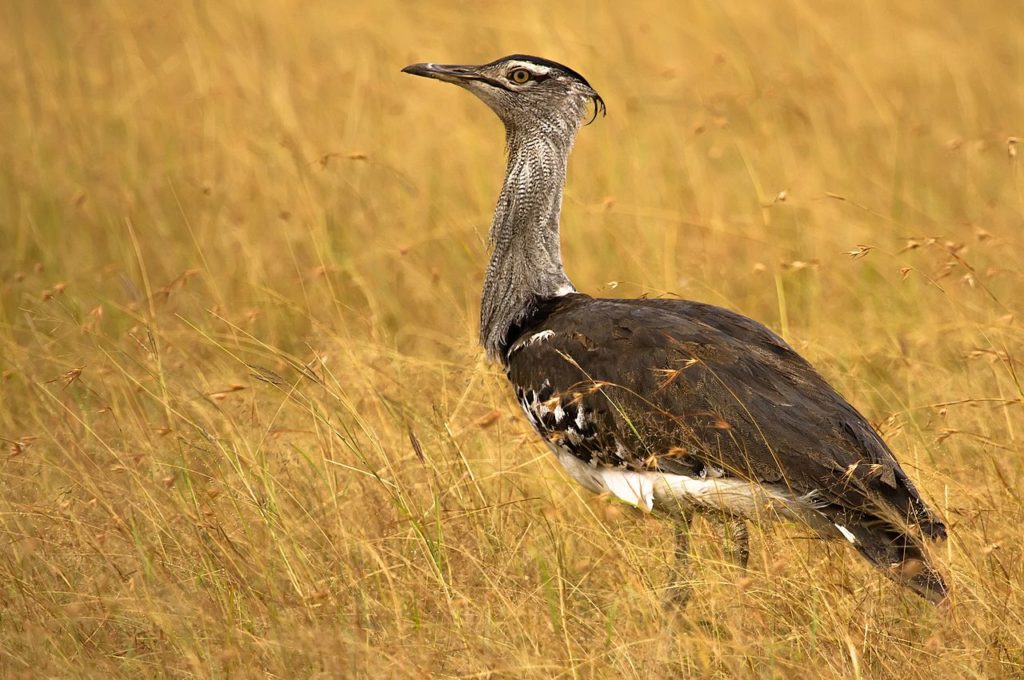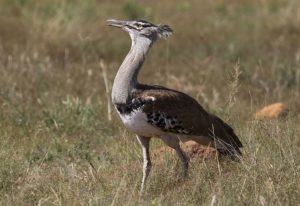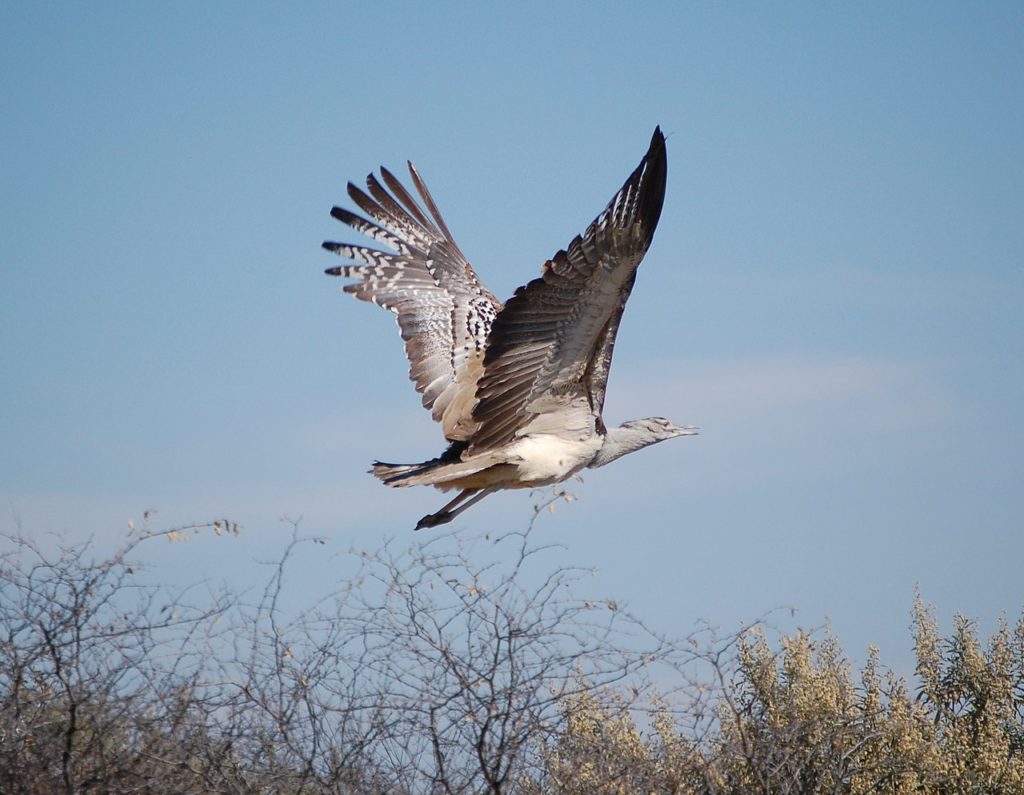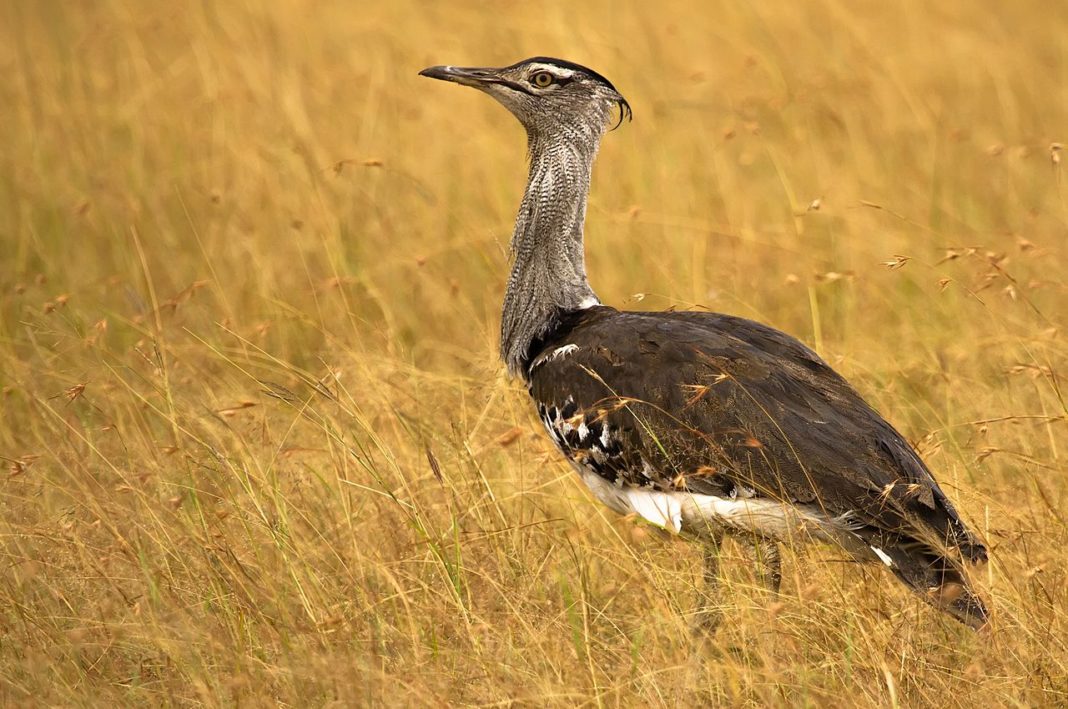The kori bustard (Ardeotis kori) is the largest flying bird native to Africa. It is a member of the bustard family, which all belong to the order Otidiformes and are restricted in distribution to the Old World. It is one of the four species (ranging from Africa to India to Australia) in the large-bodied genus Ardeotis. In fact, the male kori bustard may be the heaviest living animal capable of flight.

This species, like most bustards, is a ground-dwelling bird and an opportunistic omnivore. Male kori bustards, which can be more than twice as heavy as the female, attempt to breed with as many females as possible and then take no part in the raising of the young. The nest is a shallow hollow in the earth, often disguised by nearby obstructive objects such as trees.
The kori bustard is cryptically colored, mostly grey and brown, finely patterned with black and white coloring. The upper parts and neck are a vermiculated black and greyish-buff color. The ventral plumage is more boldly colored, with white, black, and buff.

The male kori bustard has a length of 105 to 135 cm and a wingspan of 230 to 275 cm. Male birds may typically weigh between 7 and 18 kg. Among bustards, only male great bustards (Otis tarda) achieve similarly high weights (the mean mass of males in these species is roughly the same) making the male kori and great not only the two largest bustards but also the heaviest living flying animals.

The kori bustard is found throughout southern Africa, except in densely wooded areas. They are common in Botswana and Namibia, extending into southern Angola and marginally into southwestern Zambia. In Zimbabwe, they are generally sparse but locally common, particularly on the central plateau.
According to Wikipedia















